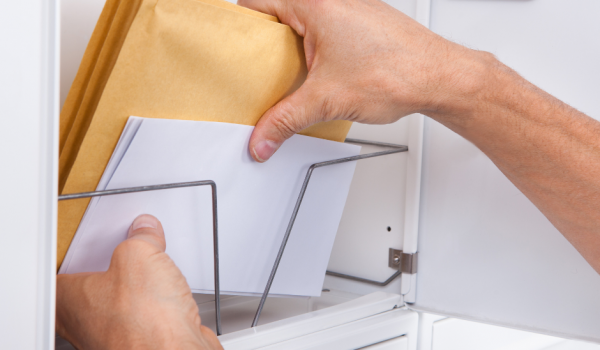
There were almost 4.8 million people living in the Republic of Ireland on census night last year.
The first set of results from Census 2016 have been published this morning – showing a population increase of 3.8 percent since April 2011. However, Donegal and Mayo both saw their populations fall.
The population of County Donegal in April 2016 stood at 159,192, a decline of 1.2% since Census 2011.
It breaks down to 79,022 males and 80,170 females, in line with the national average.
The average age of people in the county as 38.5 years, up slightly on the national average 37.4.
56,738 people stated that they could speak Irish in Donegal, down slightly on April 2011. Of those,
7,931 spoke Irish daily outside the education system.
586 Irish Travellers resided in the county Donegal in April 2016, a decline of 19.3%, while nationally, the number of people enumerated as Irish Travellers increased by 5.1%.
36,127 dwellings in Donegal had broadband access in April 2016, an increase of 11.9 % , 5,873 dwellings had non-broadband internet access, an increase of 25.8%, while the number of dwellings with no internet access fell by 25.9% to 14,561.

Full report from CSO –
Census 2016 Summary Results Part 1 Donegal’s population falls to 159,192 Census 2016 results show that Ireland’s population stood at 4,761,865 in April 2016, an increase of 173,613 (3.8%) since April 2011.
The population of County Donegal stood at 159,192, a decline of 1.2% over the five years. The total number of non-Irish nationals has fallen slightly to 535,475, or 11.6% of the population, the first decline since the introduction of this question in 2002, while the number of people with dual-Irish nationality has increased by 48,879 to 104,784 people since April 2011.
These are some of the headline figures from the Census 2016 Summary Results Part I, which is published today by the Central Statistics Office (CSO). As well as detailing the overall change in the population since April 2011, Part 1 provides summary results on age profile, marital status, families, nationality, Irish language, foreign languages, religion and housing.
Deirdre Cullen, Senior Statistician, commented “Today’s publication is the first of a series of 13 reports on Census 2016 that are due to be published this year. As well as the two summary reports, the CSO will publish 11 thematic profile releases, each of which will explore separate topics such as housing, the homeless, religion, disability and carers in greater detail. Together, these will provide a comprehensive demographic and socio-economic profile of Ireland in April 2016.”
Today’s full report is available on the CSO website at www.cso.ie/en/census and is accompanied by a range of interactive web tables which allow users to search and download the data using a range of criteria including geographic area. In cooperation with All Ireland Research Observatory (AIRO) at NUI Maynooth, the summary census data will be simultaneously available in thematic maps for Electoral Districts.
To view these, follow the link on our website. Ms Cullen thanked everyone for their participation in Census 2016, and acknowledged the contribution of the census staff – “Today’s publication comes just 12 months after census night (24 April 2016). This could not have been achieved without the civic-minded participation of the Irish public, and the commitment and dedication of all of the census staff, and I want to thank all concerned. The results will provide us with a greater insight and understanding of Ireland today“.
Some Donegal Highlights –
More females than males – Donegal’s population in April 2016 was comprised of 79,022 males and 80,170 females. There were 53,009 more females than males in the State, giving an overall sex ratio of 97.8 males for every 100 females, a slight decline on the 2011 ratio of 98.1.
Ageing population – The average age of Donegal’s population in April 2016 was 38.5 years, compared to 36.7 years in April 2011. Nationally, the average age of the population was 37.4, up from 36.1 in April 2011. The number of males aged 65 and over increased by 22% to 296,837, while the number of females aged 65 and over increased by 16.7% to 340,730.
Numbers divorced/separated continues to increase – 7,341 people were divorced/separated in Donegal, a rate of 4.6%, compared to the national rate of 4.7%. The number of divorced people in Ireland has increased to 103,895 (18%) since 2011.The number of separated people increased slightly to 118,178 (from 116,194 in 2011).
Irish language – 56,738 people stated that they could speak Irish in Donegal, compared to 58,998 in April 2011. Within this figure, 7,931 spoke Irish daily outside the education system, while 4,453 spoke Irish weekly outside the education system. Nationally, 1,761,420 people stated that they were able to speak Irish, with 73,803 speaking Irish daily outside the education system and 111,473 doing so weekly.
Irish Travellers – 586 Irish Travellers resided in County Donegal in April 2016, a decline of 19.3% since 2011. Nationally, the number of people enumerated as Irish Travellers increased by 5.1% to 30,987.
Broadband – 36,127 dwellings in Donegal had broadband access in April 2016, an increase of 11.9 % since April 2011. 5,873 dwellings had non-broadband internet access, an increase of 25.8%, while the number of dwellings with no internet access fell by 25.9% to 14,561. Nationally, 312,982 dwellings (18.4%) had no internet connection, down from more than 1 in 4 (25.8%) in 2011. Broadband use in private households increased to 70.7% (from 63.8% in 2011) and 148,125 more households had a broadband connection.
- Mon, 23 Dec 2024
- (+353) 07491 25000
- (+353) 086 60 25000





